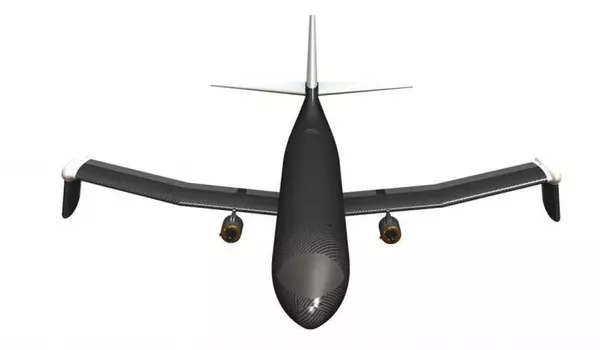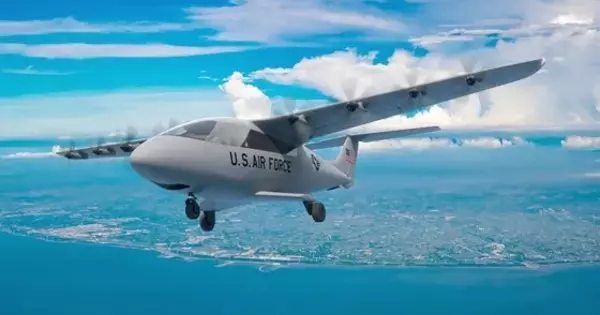Aircraft with no tail are known as “flying wings” or “tailless aircraft,” and they present unique challenges when it comes to control. However, there are several novel control methods that can be used to maneuver such aircraft.
Professor David Williams’ research team at Illinois Institute of Technology (Illinois Tech) has demonstrated for the first time the use of a novel control method in an aircraft with no tail. The technology enables an aircraft to be as smooth and sleek as possible, making it safer to fly in risky areas where radar scans the sky for sharp edges.
While traditional aircraft use protruding fins to steer, a tailless design uses active airflow, in which jets of air are blown onto different surfaces of the aircraft body, corresponding to which direction the aircraft is moving. This technology could be used to make commercial airplanes more fuel-efficient by removing drag-producing steering components.
Williams, a mechanical and aerospace engineering professor, led a team of Illinois Tech students and collaborators in the development of a jet with both traditional steering controls and a novel implementation of active flow control.
In engineering, it never works that way, you almost always get less than you were hoping for, but in this case, we got more. The first day was very dramatic. It was very strong and very scary. If the jet gets too far over on its side, it could spin out of control. In fact, it did go over to 90 degrees, but it recovered.
Professor David Williams
The group launched the jet from the Pendleton Unmanned Aircraft System (UAS) Range in Oregon in October 2022 for two nine-minute flights that demonstrated the system’s success. One pilot launched the jet using conventional flight controls for each flight. The pilots then handed over control to a second pilot, who operated the active flow control system, in the middle of the flight.
In the first test, the team found that the active flow control system actually provided more power than had been predicted from wind tunnel tests.
“In engineering, it never works that way, you almost always get less than you were hoping for, but in this case, we got more,” says Williams. “The first day was very dramatic. It was very strong and very scary. If the jet gets too far over on its side, it could spin out of control. In fact, it did go over to 90 degrees, but it recovered.”

Once the pilot was confident in their ability to control the craft, they performed roll and pitch maneuvers to test the ability of the active flow control to steer the jet at steep angles. Active flow control has the potential to enable maneuvers that would be impossible with conventional controls, such as very fast turns and the ability to fly at angles that would render conventional controls ineffective.
The unexpected power of their system, according to Williams, has increased his confidence that they will be able to perform these more advanced maneuvers with this jet. For their second flight, Williams reduced the power to the active flow control system for a safer, more stable flight, allowing them to collect more data about how the active flow control was operating.
The active flow control is implemented with the help of a patent-pending Coanda valve designed by Williams and his students, and this was their first opportunity to demonstrate the design’s success on an aircraft.
According to Williams, the team will conduct more flight tests, gradually progressing toward using active flow control during takeoff and performing more extreme control maneuvers. Their findings will be presented at the AIAA Aviation conference in San Diego in 2023.
“We’ve made the breakthrough I was hoping for,” Williams says. “Now, future tests will begin to add to the accomplishments and confidence in the design of the airplane.” Williams is a member of a NATO working group that was awarded the 2021 Excellence Award for its efforts in this area.
















